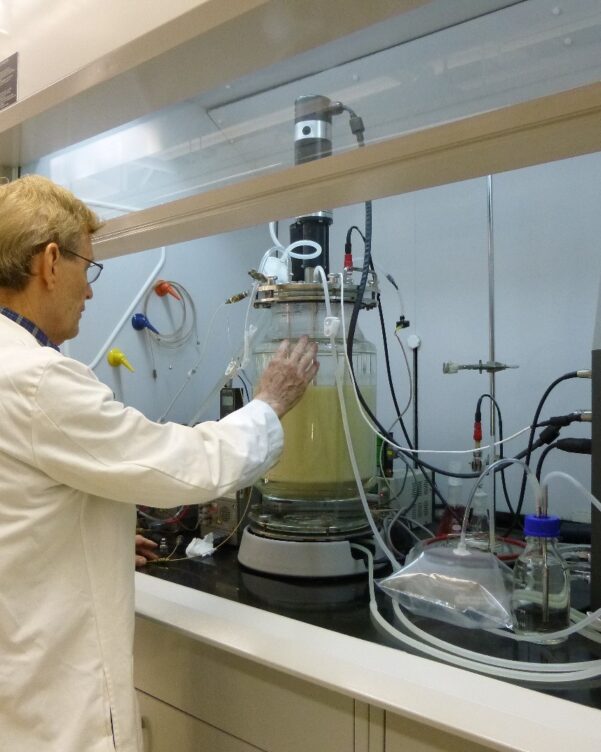Professors develop process to turn dinner scraps into renewable energy
Two PNW professors have spent the last eight years slogging through sewer sludge and food waste in search of a new source of energy.
Professors Libbie Pelter and Robert Kramer, working with Purdue University professor John Patterson, have patented a process to turn food waste into hydrogen, a clean fuel that can be used for transportation and utilities.
Their work started when they began mulling what could be done about the roughly 108 billion pounds of food waste produced each year in the U.S.
“I think of this as what I call a ‘point source’,” said Pelter. “Eventually we could have something where everybody’s garbage disposal in their home is connected to some kind of a system that takes that one step further and generates energy and also treats the waste.”
Pelter, a chemistry professor, worked with Kramer, a physic professor, and Patterson, a food scientist, to come up with ideas about how to tackle the problem.
They originally created hydrogen using food waste from the PNW cafeteria and sewage sludge inoculum, a mix of bacteria used to digest the waste and convert it into energy. They have since shifted to a different bacteria cocktail to improve control and efficiency.
“You have food waste, it can change in consistency, and it can change in the amount of sugars in it, so you’re going to have a process you’re totally readjusting,” Pelter said. “If we modify the system so it’s adjustable or more robust for different types of food waste, then you could think about having an application on a smaller scale, like a high school cafeteria that just produces enough hydrogen for some local use.”
While there is growing demand for clean fuels, one of the biggest issues for hydrogen production is making it cost-effective. Now, the most cost-effective approach involves making hydrogen from fossil fuels.
They have received $800,000 in grants from The Department of Energy, the Purdue Research Foundation, and the Energy Efficiency and Reliability Center here on campus.
Pelter envisions large-scale hydrogen production becoming reality in our future.
“If you have a manufacturer that’s manufacturing corn and they have a consistent waste stream, we can use larger bulk to produce the hydrogen,” she said. “That hydrogen can be used as an energy source at the manufacturing plant.”
Pelter thinks we are close to having hydrogen as a clean and affordable energy source. The most recent funding Pelter and Kramer have received, the Purdue Research Foundation Trask Innovation Fund grant, will underwrite the creation of larger-scale operations.



